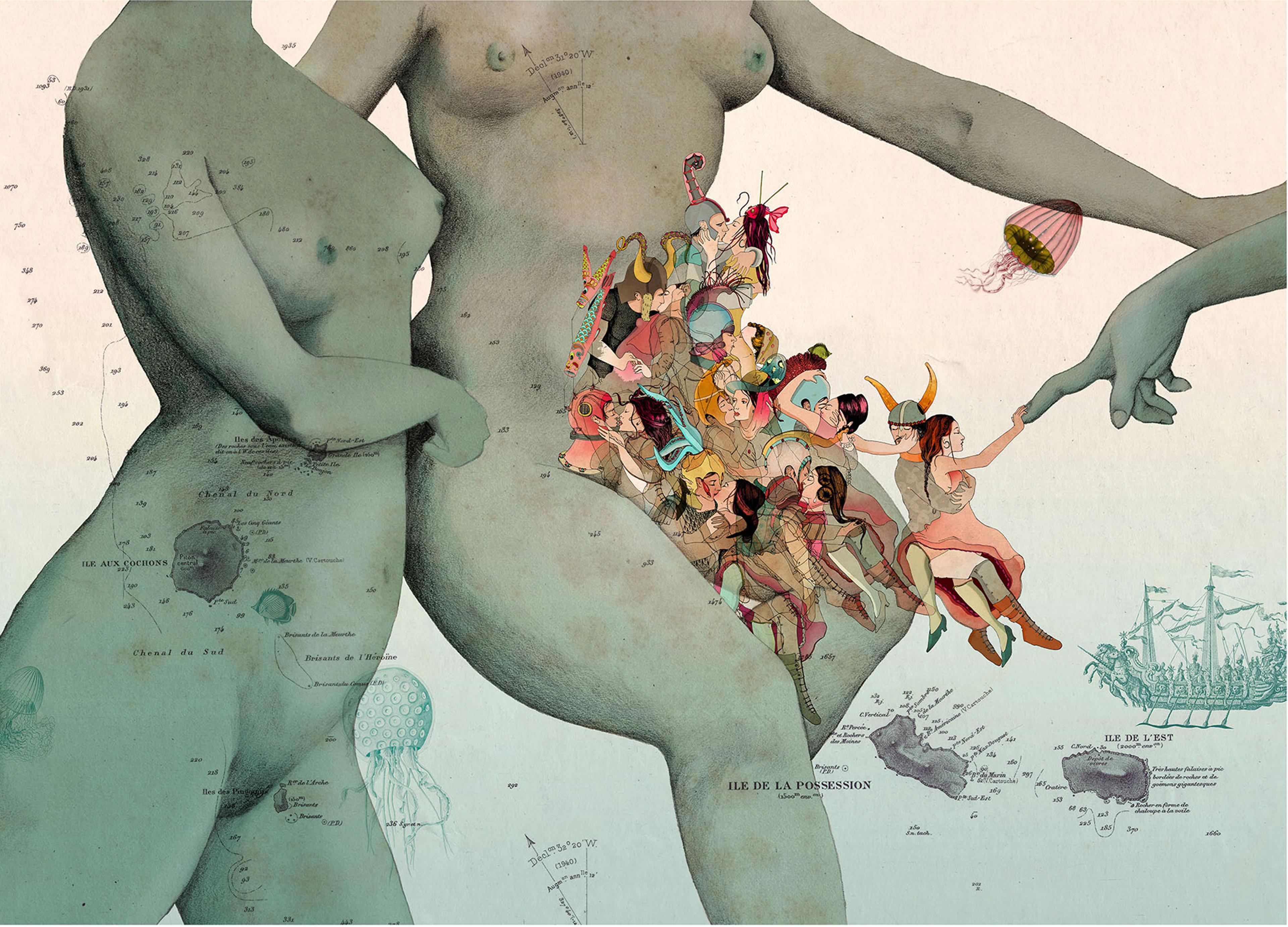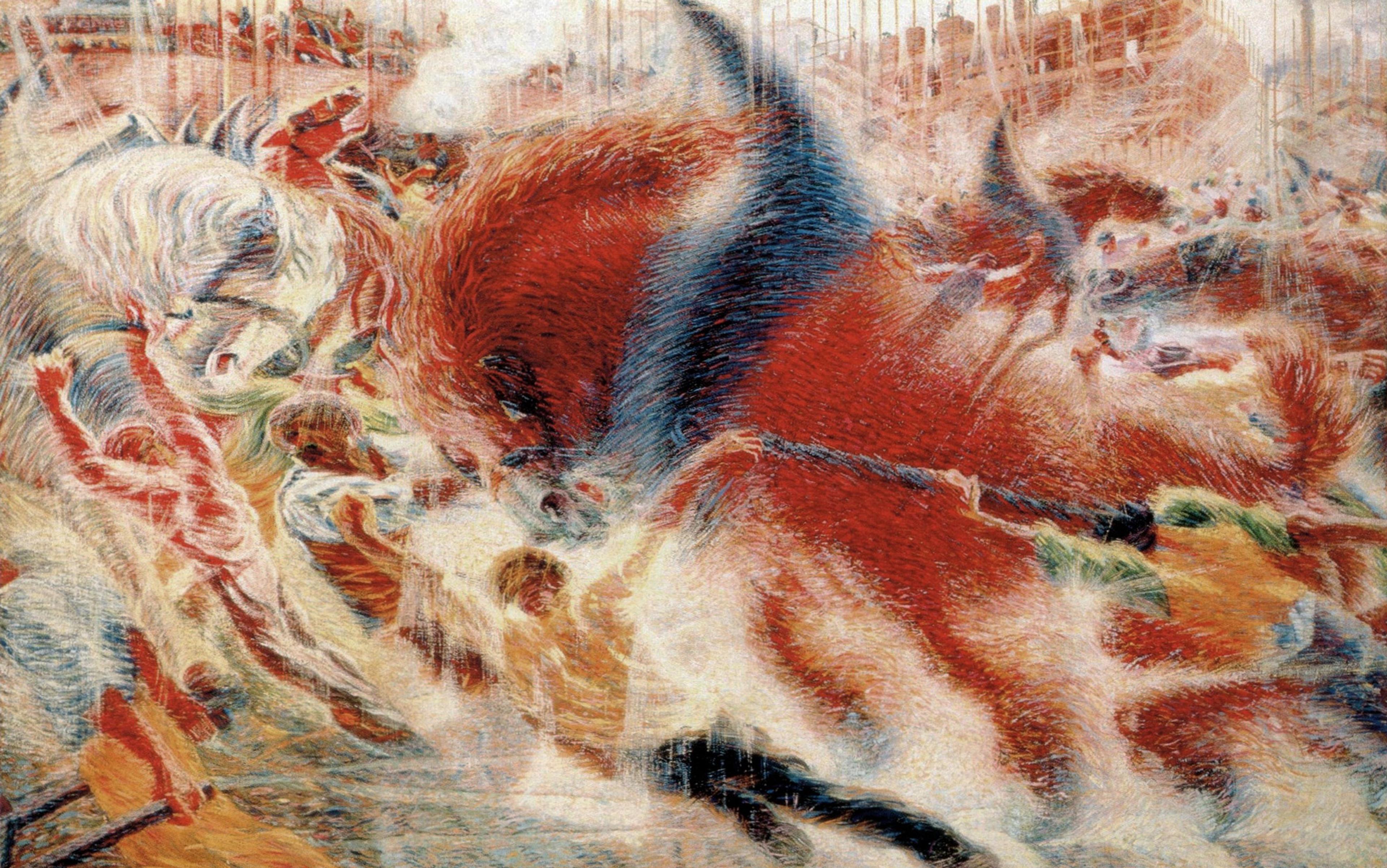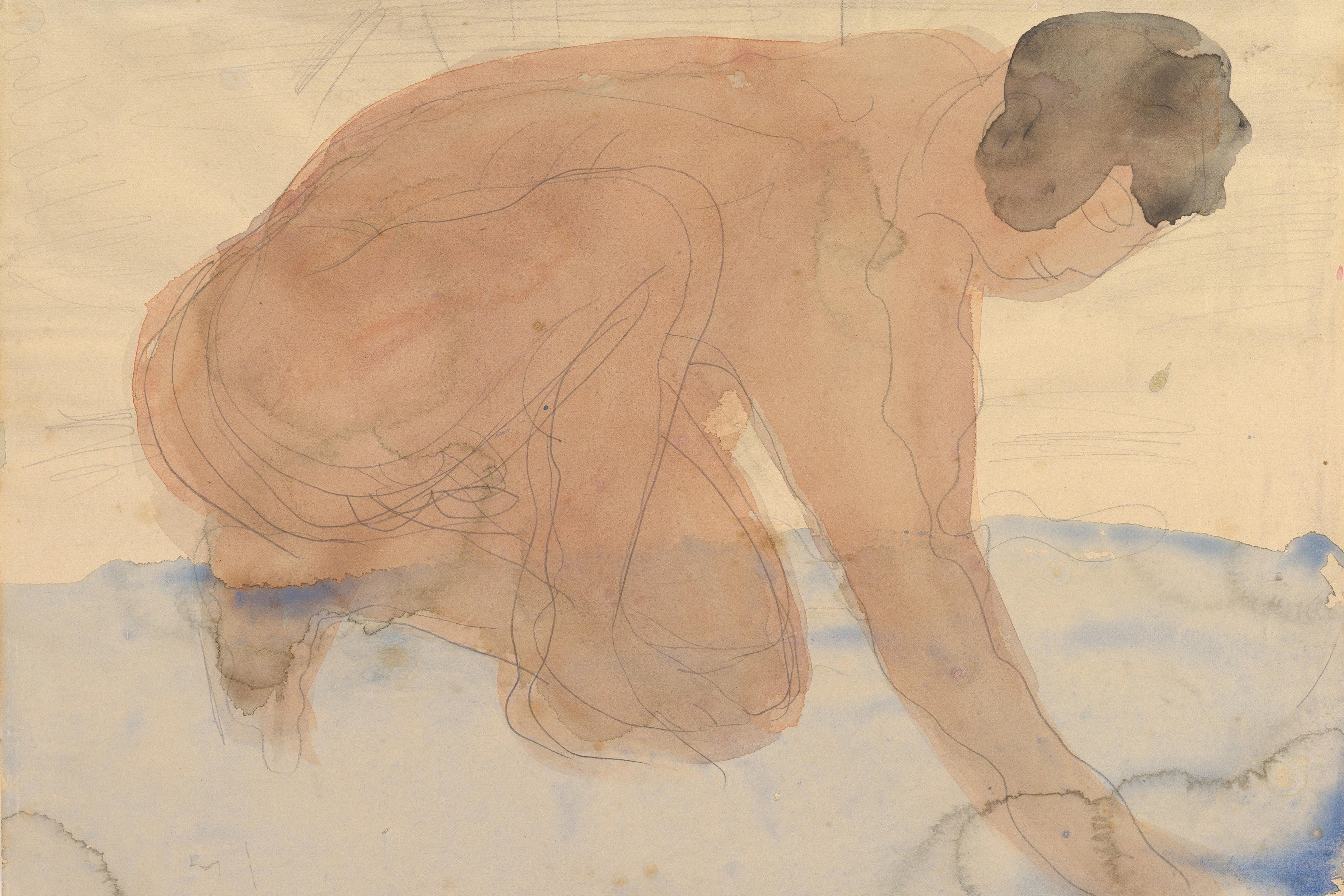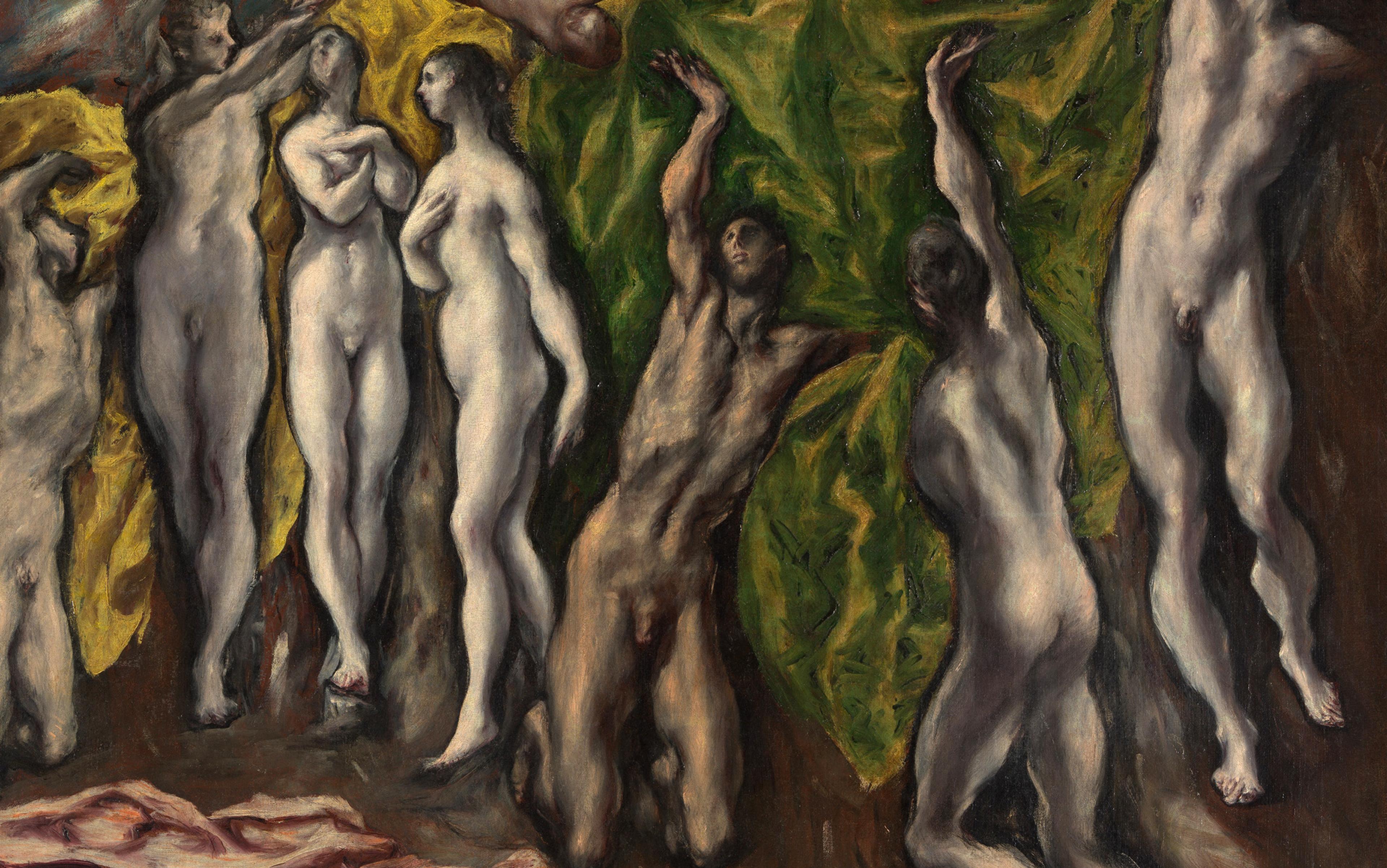In 1926, Virginia Woolf wrote about how, when one is ill:
All day, all night the body intervenes; blunts or sharpens, colours or discolours, turns to wax in the warmth of June, hardens to tallow in the murk of February. The creature within can only gaze through the pane – smudged or rosy; it cannot separate off from the body like the sheath of a knife or the pod of a pea for a single instant; it must go through the whole unending procession of changes, heat and cold, comfort and discomfort, hunger and satisfaction, health and illness, until there comes the inevitable catastrophe.
Woolf knew well about bodily interventions, suffering as she did from a range of symptoms pertaining to what today we call bipolar disorder. Yet the body intervenes constantly, whether one is ill or not. It is the mode of intervention that conditions how well, or unwell, we feel. A state of wellbeing is one in which we do not need to think about our embodied organism in any way other than the sensorial pleasures it affords, where we are immersed within our environment, engaged in an activity, involved with others. But one of physical or emotional pain affects the very foundation on which the sense of self we otherwise take for granted rests: what we feel ourselves to be can be upended. When this happens, we may realise that what we feel ourselves to be is in fact constructed. How we exist as embodied selves is a highly complex business involving the brain and body engaged in constant interaction.
Over the past few years, scientists working in neuroscience and psychology have been listening in on these brain-body interactions – in health and illness – and analysing how they constitute the always embodied self. They have been studying the sense of the body from within, which is called interoception. It is a term you will be hearing increasingly. This research is dismantling the pillars of a belief system that has long endured within those fields – as well as in the popular imagination – that the brain is an information-processing machine that can be understood apart from the rest of the body, as if our conscious, reasoning self were the output of a disembodied brain, and as if we were not fully biological creatures. This shift within the mind sciences is game-changing, and merits attention. Yet perhaps because we are in its midst, even its actors might not be fully aware of its historical and philosophical significance – and of its potential cultural and clinical implications. The time has come to take stock of the revolution under way.
Since the publication in 1994 of his first widely read book, Descartes’ Error (followed by four others), which showed how embodied emotional processes are integrated into rational ones, Antonio Damasio has been the most visible and influential neuroscientist to develop this reconception. Since then, research into the embodied sense of self has accelerated. And now a new generation of scientists is building on the insights first elaborated by Damasio. Over the past decade, there has been a six-fold increase in publications on interoception. Questions about the self – self-consciousness and bodily consciousness, our sense of body ownership, and agency – once the exclusive domain of philosophy, can now be investigated empirically. The emerging results have the power to transform our vision of what we are, as well as ground in scientific detail what we may intuitively feel about ourselves. They can provide insights into what it is that may be breaking down when the always embodied sense of self is disrupted, when that window pane is smudged. This is particularly important in understanding neurological and psychiatric disorders – psychotic events and schizophrenia, as well as autism, attention disorders, dyspraxias, somatoform disorders, body image and emotional-processing disorders such as anorexia, alexithymia (a difficulty in identifying or acting upon felt emotions) and more.
Interoception consists in the perception and integration of all signals from within our body, whether we attend to them or not. These include autonomic, hormonal, visceral and immunological functions: breathing, blood pressure, cardiac signals, temperature, digestion and elimination, thirst and hunger, sexual arousal, affective touch, itches, pleasure and pain. Interoception therefore lies at the core of our very sense of self: physiology and mental life are dynamically coupled. The central and autonomic nervous systems act on each other, higher cognition and emotional states interacting constantly. We sense, monitor and adapt ourselves to the situations we find ourselves in, often without our realising it – homeostatic processes thanks to which we physiologically adjust to the changing environment, and to which interoception corresponds.
The neurophysiologist Charles Sherrington was the first to use the term ‘interoceptive’, as long ago as 1906. He used it to refer to the sense of our own viscera (today’s visceroception). The term homeostasis was coined in 1926 – the year in which Woolf published her essay – on the back of the concept of ‘milieu intérieur’ (‘interior milieu’) that the biologist Claude Bernard had first described in the mid-19th century. As the historian Stefanos Geroulanos and the anthropologist Todd Meyers have recounted on Aeon in light of their book on the topic, it emerged following the carnage of the First World War, which had led physiologists and clinicians to reconfigure their understanding of the body as ‘an organism that organises itself’, as ‘an integral whole’. Damasio wrote in his book Self Comes to Mind (2010) that though the principles of homeostasis ‘are applied daily in general biology and medicine, their deeper significance in terms of neurobiology and psychology has not been appreciated’. But now, just a few years later, they are both appreciated and far better understood.
It is in relation to others that we acquire a sense of self, which develops in this embodied interoceptive way from infancy
The meaning of interoception expanded after the neuroscientist A D Craig, nearly a century after Sherrington, revised it to encapsulate what he termed ‘a sense of the physiological condition of the entire body’: these translate as ‘“feelings” from the body that provide a sense of [our] physical condition and underlie mood and emotional state’. Emotional feelings are distinct from emotions, and they are ‘mental experiences of body states’, as Damasio had advanced with his somatic marker hypothesis – summarised by Craig as ‘the subjective process of feeling emotions’, which recruits brain regions involved in homeostastic regulation. These feelings, ‘grounded in the body itself’, are crucial to our ability to make decisions. We don’t merely think through our decisions, including those that seem most rational, such as those concerning finances: we experience feelings about their possible outcomes that determine how we act – and if the brain areas involved in the processing of emotional feelings are damaged, our ability to make decisions is impaired. Craig identified the interoceptive pathways that provide a cortical image of homeostatic processes from all the organs, and which translate as feelings when brought to consciousness. As detailed in How Do You Feel? An Interoceptive Moment with Your Neurobiological Self (2014), he and his team individuated projections to the brainstem of neurons in the spinal cord called lamina I: these provide to the autonomic nervous system, or ANS, input about the ‘mechanical, thermal, chemical, metabolic and hormonal status of skin, muscle, joints, teeth and viscera’ from small-diameter nerves throughout the organism’s tissues. It is from these lamina I projections to brainstem that ‘sensory channels’ ascend to areas of the thalamus, and from there to a brain area called insula, the ‘interoceptive cortex’.
In contrast to interoception, the notion of proprioception is more familiar to most of us – the sense of our dynamic, musculoskeletal body in space. It is how, for example, I know where my arm is when I wake up in the dark. It is distinct from interoception, but functionally and anatomically connected to it, as is also the case for exteroception, the sensory perception of the outside world. These senses can be manipulated, as has been done to great effect in the much replicated Rubber Hand Illusion (RHI) first conducted 21 years ago, where one sees a rubber hand being stroked synchronously with one’s own hand – itself unseen – with the resulting sense that the rubber hand is one’s own, an effect dramatically demonstrated when the experimenter hits the rubber hand with a hammer and the subject almost invariably recoils as if the hand belonged to him or her. The RHI has served research into the fundamental sense of body ownership and the related sense of agency – the sense we normally take for granted that my leg, say, is mine, or that I am moving my own arm. Complex processes enable this sense to develop and be maintained, or, as can be the case in somatosensory and sensorimotor pathologies, disturbed. The RHI, and related experiments triggering a full-body illusion show that ‘multisensory integration can update the mental representation of one’s body’ and that exteroception can influence self-awareness, as reports the psychologist Manos Tsakiris, whose research within these areas has been yielding important insights.
But, as he and his team have found, this induced change in conscious body ownership results also in nonconscious changes in the physiological regulation of the self – that is, in interoception. The anterior insula is involved in both these exteroceptive and interoceptive processes, resulting in how we feel that our body is oneself and that the self remains unified and stable amid exteroceptive inputs. Moreover, it has been shown to be activated during both interoceptive and emotional experience, and also to be involved in the distinction of self and other. This in turn bears on the related capacity for empathy – with consequences for racial bias that Tsakiris has recounted here on Aeon, in a finding by his team that throws light on the neurobiology underpinning our social and political emotions. Other brain areas involved in the bodily self-consciousness arising out of the processing of multisensory signals are the fronto-parietal and temporo-parietal regions, as reported by the cognitive neuroscientists Olaf Blanke and Andrea Serino, who perform key research on how multisensory perception gives rise to the embodied, spatially located, self-conscious subject of experience that we each are (with eventual applications to prosthetic limbs).
However crucial a finding is the involvement of these areas, and of the insula in particular, in the formation and maintenance of a core selfhood, it is the interactions between brain and body that are the centre of our story. The body sends signals to the brain, and vice versa, in a constant feedback loop that involves the ANS acting in response to external inputs and interoceptive states, enabling and disabling our various states of arousal and fight or flight reactions. In this way, ANS serves homeostatic adjustments. Recently, the notion of allostasis has been gaining ground in accounting for these adjustments: where homeostasis refers to a stable condition, allostasis refers to the process that the organism engages in to achieve stability, ‘the regulation of bodily states through change’, as Tsakiris and the neuroscientist Anil Seth define it. So for instance, one homeostatic imperative is to remain within a specific temperature range: we would die if we were unable to anticipate how environmental temperature influences body temperature, and so to adjust our actions accordingly, dive into the cool sea when the sun is baking, say. Allostasis is this anticipatory adjustment – what ‘enables the organism to proactively prepare for such disturbances before they occur’, writes the philosopher Jakob Hohwy with Andrew Corcoran. The same process applies to all basic bodily functions. We need to get hungry before we faint, thirsty before we get dehydrated, and so on.
These complex interoceptive processes are happening all the time, whether we are aware of them or not. They are modulated by the ANS, ensuring constant adjustments as well as basic survival. In cases of stress, these evolved responses of the ANS can go into overdrive, affecting gut function and vascular health, triggering the various immune and inflammatory responses that result in illness. Investigations regarding this all-important brain-gut interoceptive pathway are ongoing. But the equally all-important brain-heart connection has been particularly crucial to our understanding of interoception, because of the ease in performing heartbeat detection tasks to test individual interoceptive ability otherwise challenging to measure precisely because it is the stuff of our subjective experience. The neuroscientist Catherine Tallon-Baudry has hypothesised a ‘neural subjective frame’, connected to homeostatic regulation, necessary to subjective, perceptual consciousness, which depends on ‘how the brain registers information on the heart’. Important experiments have been conducted, most notably by the neuroscientists Sarah Garfinkel and Hugo Critchley, that show how emotions are modulated in synchrony with cardiac rhythms. Emotional self-knowledge is a multilayered affair: Garfinkel and Critchley have also identified how interoceptive accuracy, sensitivity and awareness are distinct from each other, reflecting respectively the ability to detect one’s heartbeats, the evaluation of one’s own ability to do so, and one’s ‘meta’-ability to gauge one’s own awareness. We all differ in these abilities, and in our corresponding sensitivity to the ongoings of our body. These exquisite distinctions between levels of self-awareness translate into pain threshold, anxiety level and so on – into our ability to experience feelings, to have a sense of what they correspond to, to track and modulate them, or not.
These abilities even translate as character traits. So for instance, people with a higher interoceptive accuracy – that is, a greater ability to monitor their own internal states, identified by heartbeat detection tasks – are less prone to be taken in by the RHI than those on the lower end of the scale, Tsakiris and colleagues have found. This means that their self is more stable, and their capacity for empathy higher: as Tsakiris and the psychologist Clare Palmer report, ‘interoceptive processing acts to stabilise the model of our self’, so we can ‘attribute emotional and mental states to the self or to others without blurring the distinction between “self” and “other”’. This matters hugely in our day-to-day lives. In a major review article in Neuropsychoanalysis, the psychologist Aikaterini Fotopoulou – who studies in particular the centrality of affective touch in interoceptive processing and emotional development – and Tsakiris argue that the self is shaped from early infancy – when one is entirely dependent on the carer for homeostatic regulation and hence survival – by embodied interactions with carers that centrally include affective touch. This confirms insights from psychoanalysis: affect is ‘the background of all subjective, conscious experience’, they write. Our capacity to modulate affect begins with the carer attending to the infant’s embodied needs. Out of the processing of sensorimotor signals initially integrated into a basic, minimal or core self arise what they call ‘embodied mentalisations’ that progressively lead to our ability to form a boundary between self and other – a process that cannot happen in isolation. It is necessarily in relation to others that we acquire a sense of self, which develops in this embodied interoceptive way from infancy on. We sustain a constant sense of selfhood in dynamic relation to and distinction from others, and, in turn, our ability to form a boundary between self and other is a function of our ability to feel our embodied selves from within – this is the important novelty of their claim. An unformed or badly formed boundary can translate into psychiatric pathologies.
Our brains serve our bodies, rather than the obverse – a liberating idea
This picture integrates a useful model from artificial intelligence, principally developed by the influential neuroscientist Karl Friston, called Predictive Coding, which is increasingly widespread in accounting persuasively for interoceptive and homeostatic/allostatic processes, and for psychopathologies, including depression. It reconceives the brain as a ‘statistical organ’ that makes predictions about sensory information on the basis of previous instances. It ‘generates explanations for the stimuli it encounters’, Friston writes with Anil Seth, ‘in terms of hypotheses that are tested against sensory evidence’ from our visceral sensations. The actions we undertake in response to interoceptive signals – that is, the allostatic regulation that our homeostatic needs impel us to engage in – serve to reduce prediction errors with regard to our expectation of environmental inputs. In this way, our present is made of a constant projection into the future out of the past. So, as Fotopoulou and Tsakiris write, an infant will ‘progressively build generative models regarding the possible causes of their sensory states in the external world’. The brain predicts the probability of an embodied feeling state occurring as a result of an input – ‘embodied mentalisation’, in their coinage. This physiological, homeostatic reaction turns into the ‘psychological feelings’ they call ‘mentalisation’ and that form the core of the infant’s minimal self. The stability of the self in an always changing environment, Tsakiris and Seth have argued, is ensured by our engaging in allostatic prediction. This stability is never given: our constantly revised engagement with the world is a dynamic process.
In Self Comes to Mind, Damasio argues that ‘the body is a foundation of the conscious mind’: our brains serve our bodies, rather than the obverse – a seemingly provocative, but profoundly liberating idea that arises out of the oft-forgotten fact that life began without nervous systems. Our inherently homeostatic selves are on a continuum with homeostatically governed single cells and bacteria. As he writes, ‘the special kind of mental images of the body produced in body-mapping structures, constitute the protoself, which foreshadows the self to be’ – and eventually culture, art and meaning, as he has also continued exploring in his most recent book, The Strange Order of Things: Life, Feeling, and the Making of Cultures. The structures responsible for this, as Craig showed too, are in the evolutionarily ancient upper brain stem, below more recent cortical structures, ‘attached to the parts of the body that bombard the brain with their signals’, forming a ‘resonant loop’ as somatic markers. That these processes begin with homeostasis shows how deeply continuous our very consciousness is with the most primitive fabric of life. It is a potent rebuttal to René Descartes. And as Tsakiris has put it: ‘By grounding the self in the body, psychology could, at last, overcome Cartesianism and make the bodily self the starting point for a science of the self.’ We are indeed beyond the starting point now.
This shift away from Cartesianism – let us call it the interoceptive turn – has a long history within Western thought, at the crossroads of philosophy, medicine and psychology. We may begin when there developed over the 17th century mechanistic and corpuscularian models of nature – attempts at forging a new scientific method to re-describe matter, motion and living bodies. These freed natural philosophy from the Aristotelian strictures that had prevailed for close to 2,000 years and had ensured the mind-body, human-animal continuum. Descartes is infamous for loosening the connection of matter and mind. His ambition to replace the Aristotelian system with his own mechanistic model was broadly successful within philosophy – and later within medicine. Echoing St Augustine’s idea that the very existence of thought presupposed a disembodied, thinking self, Descartes performed the introspective turn that we are outgrowing – theologically locking himself into a system that required the conscious mind to pertain to an immaterial, immortal soul, a ‘thinking thing’ separate from the realm of ‘extended’ physical things. And he thereby sundered the continuum of higher, self-conscious thought with the other functions of all living beings, denying beasts any sort of mindedness. There were alternatives to this substance dualism – and he himself accepted that mind and body do interact, in emotional experience. Many physicians, attuned to the realities of ailing patients, adopted Gassendism, an adaptation of ancient atomism and Epicureanism to Christianity, which maintained the continuum of nature. Over the 18th century, vitalists battled against mechanism in philosophy and medicine, arguing for the inherence of soul in body. There were attempts from then on at a psychosomatic medicine. As materialism rose along with secularism, the notion of a separate, immaterial soul lost its function.
But it took a while for the empirical study of the embodied mind to become enmeshed with the philosophical study of knowledge and self. Realms of enquiry remained divided until the birth of scientific psychology, in the second half of the 1800s, when modern neurology and psychiatry took shape along with growing knowledge of the anatomy and physiology of the brain and nervous system. Freud himself specialised in neurology when the discipline was new, before realising that the neurobiology of his day would be unable to yield the secrets of mind. He eventually posited an unconscious field of mental action, often somatised – as in the case of hysteria, today’s somatoform disorder – but accessible through talk, creating psychoanalysis. The notion of a scientific psychology was coined by his older contemporary Wilhelm Wundt, who elaborated an introspective ‘experimental psychology’ to build a theory that would account for subjectivity. However, what first kickstarted a quarter-century ago the perspectival shift that has led to where we are today is the resurgence of William James’s scientific psychology, as given in his Principles of Psychology of 1890 and in his 1884 article on emotions – mainly his notion that emotions are the product of the body’s autonomic response, only thereafter translated as behaviour and experienced as feelings, and that consciousness is a continuous ‘stream’ of embodied experiences. (It is the very stream that formed the core of Woolf’s writing technique.)
Western medicine mechanistically chops up the body and leaves patients confused about the nature of their ailments
Until then, philosophy had remained largely disengaged from empirical investigation (in contrast to early modern practices), while the belief prevailed within cognitive science that our brain might ‘just’ be a machine that computes information, performing functions that could be studied irrespective of the biological structures upon which they operate. It was a transposition of mind-body to brain-body dualism – as if biology were incidental to the higher activities of an ultimately disembodied mind. This functionalist focus on the algorithmic operations of cognition had followed upon behavioural psychology, which, partly in reaction to Wundt’s introspective psychology and in an extension of Cartesianism, posited that behaviour was the outcome of reflex-like responses to environmental stimuli rather than manifestations of emotionally rich intentions. Cognitive science outgrew the behaviourist model from the 1950s on, absorbing neuroscience and evolutionary theory into its accounts of individual and social psychology, and elaborating scientific protocols that put the mind back behind the behaviour. The analogy of the brain with a computer, however, remained powerful.
Computational neuroscience continues to grow. Friston’s Predictive Coding theory is one of its fruits. But the hold of ‘strong AI’ has loosened since the 1990s – just as Damasio’s insights into embodied emotions and the emotive self started putting the whole organism together again. By then, the body had also become a popular theme in the humanities and social sciences. And the centrality of the body to the mind began around that time to be analysed within an anti-cognitivist neurophilosophy first made popular by Francisco Varela, which combined an outgrowth of the phenomenology of Maurice Merleau-Ponty with Buddhism: for ‘enactivism’ and related approaches, cognition and the sense of self depend upon a body endowed with sensorimotor capacities embedded within the world. The philosophers Shaun Gallagher or Dan Zahavi work within this lineage, and the hybridisation of disciplines has enabled philosophers such as Frédérique de Vignemont to analyse neuroscientific data, and, conversely, for neuroscientists to work with philosophers. The minds of animals are studied on a continuum with ours. The remnants of substance dualism endure in AI and some everyday thought habits. But we can no longer escape the reality of our biology, as scientists are showing us, a fraction of whose work I have presented here. And there is much more ahead.
Yet insights from theory have always been hard to apply straightaway, if at all, to the clinical realm. There is today an increasing dissatisfaction with mainstream Western medicine, which mechanistically chops up the body and leaves patients confused about the nature of their ailments, and concurrently a growing market for alternatives that take holism seriously. (In Germany alone, psychosomatic medicine is an institutionally established clinical field.) In parallel, practices such as yoga continue to grow worldwide. The science of embodiment might provide eventual protocols for the testing of such holistic treatments and practices, to help target them to particular conditions, especially psychiatric and neurological. Biofeedback, the use of sensory stimuli, physical therapy, etc, have been shown to help reduce the anxiety caused by the combination of high interoceptive awareness and alexithymia (as Fotopoulou and colleagues have shown), and often found in autism, heighten interoceptive awareness in anorexia and attention disorders – or lower it in depression and somatoform disorders, where, as the neuroscientist Georg Northoff has argued in his book Neuro-Philosophy and the Healthy Mind (2016), one’s body becomes the predominating content in awareness, at the expense of the environment. And just as mindfulness has become a widespread tool, which the psychologist Norman Farb has studied in relation to interoception, so the practice of yoga, which powerfully modulates interoceptive awareness, could benefit from inputs from the scientists investigating embodiment – and vice versa.
The interoceptive turn is a historical step to the other side of our mind’s looking glass, into the heart of our complex organism, reconciling us to our mortal embodiment, forcing us to consider our mental makeup with humility as just one aspect of biology – a far cry from the posthumanist future that Yuval Noah Harari and others warn us about. It does not dissolve the mystery of how we are able to think and speak sophisticated thoughts, create art and meaning, or indeed investigate self and world: science does not replace experience, and though it is indispensable to serious thought about human nature, and to the advancement of clinical care, so is a humanist eye on what the best of science can tell us about ourselves. Yet this new picture has a transformative power. It can help understand, to an extent, how we relate to each other as embodied beings, how we feel at each moment of our lives, why Woolf’s ‘creature within’ feels what she does when unwell. It can help us understand each other in our animal nature so as to regain harmony with nature, and in our inherently social nature so as to regain harmony with each other – and to maintain our psychophysical integrity in the face of the ‘procession of changes’ that Woolf writes of. No window pane into the self is perfectly transparent. But we are clearing up some smudges.






